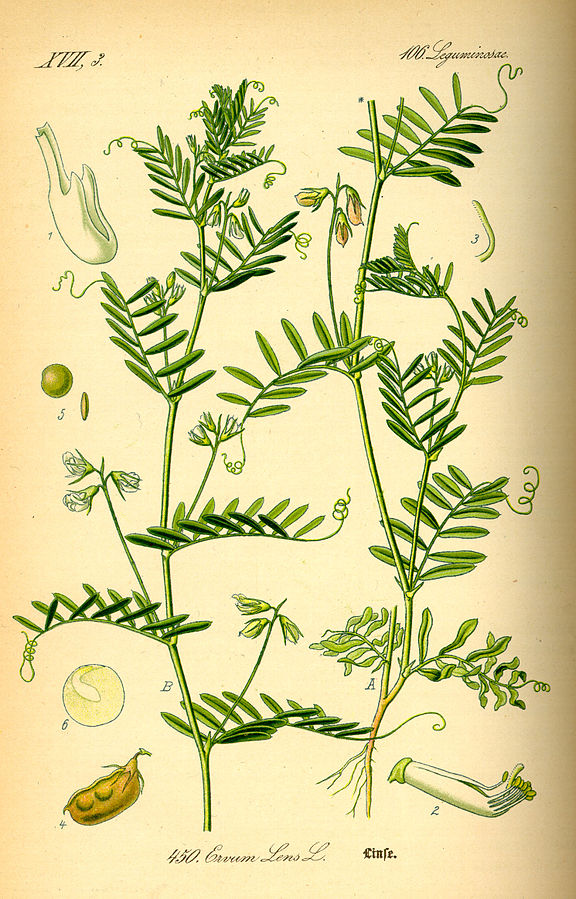
Lentil is an annual and a member of the bean family, Fabaceae, that also includes lupines, alfalfa, and black locust. It was first domesticated in the Fertile Crescent by 6,000 BC and spread to Europe, the Middle East, and north Africa . Carbonized remains of lentils have been found in the soil of the Pompei area at the time of the eruption of Vesuvius and were probably well-known to the ancient Pompeians. The ancient Roman naturalist, Pliny the Elder (d. 79 AD) mentions lentils numerous times in his work, Natural History, as though his readers were familiar with them. He gives directions for the cultivation of lentils as well as 17 lentil-based remedies for treating a variety of ailments. A 5th century AD cookbook, De re culinaria, includes recipes using lentils with cow-parsnips or chestnuts, but there is no evidence that the ancient Pompeiians were familiar with such recipes Lentil are considered a very nutritious food with a high fiber and protein content.
Description: Lentil grows about 16″ tall and has slender, hairy, well-branched stems and pinnately compound leaves. Each leaf ends in a tendril or bristle and has 5-16 oblong leaflets that are up to .8″ long. In response to long days, plants produce 1-2″ long axillary racemes of flowers. The flowers are pea-like, white to purple in color, and give way to seed pods that contain 2-3 lens-shaped seeds. The seeds may be grey, green, tan, pale red, or black depending on the cultivar, and are the most valuable part of the plant as a food.
Size: 16″ H
Light: Full sun
Soil: Average, medium moist, well-drained; tolerates lean soil and fixes nitrogen